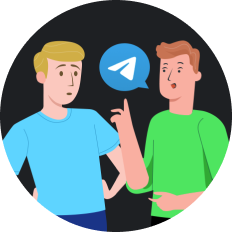How to Unblock Calls: Complete Guide 2025
Have you ever experienced the frustration of seeing "Blocked" or "Unknown" on your caller ID, only to miss potentially important calls? In today's privacy-conscious world, more people are blocking their numbers when making calls, but there are legitimate reasons why you might need to receive these communications. As of April 2025, unblocking calls has become increasingly important for both personal and professional reasons.
Why Calls Get Blocked and Why You Might Need to Unblock Them
Call blocking happens for various reasons - privacy concerns, telemarketing restrictions, or carrier-level blocking due to suspected spam. However, there are several scenarios where unblocking calls becomes necessary:
- Missing important calls from healthcare providers who often use blocked numbers
- Awaiting callbacks from job applications
- Emergency communications from family members using borrowed phones
- Business contacts calling from private corporate lines
While some might argue that unblocking calls could expose you to spam, the reality is that with the right tools, you can selectively unblock calls without compromising your security.
Common Methods to Unblock Calls in 2025
Method 1: Using Your Phone's Built-in Settings
Most modern smartphones offer basic call unblocking features:
For iPhone users:
- Open the Settings app
- Tap on Phone
- Select Blocked Contacts
- Swipe left on any number you wish to unblock
- Tap Unblock
For Android users:
- Open the Phone app
- Tap the three dots menu (⋮)
- Go to Settings > Blocked numbers
- Select the number you want to unblock and tap Unblock
However, these methods only work for contacts you've previously blocked manually - they don't help with calls that arrive already blocked by the caller.
Method 2: Contact Your Carrier
Major carriers offer call unblocking services:
- AT&T: Call Management service
- Verizon: Call Filter features
- T-Mobile: Scam Shield options
Simply contact your provider's customer service to discuss available options for receiving blocked calls. Some carriers may charge additional fees for premium call management services.
Method 3: Using Third-Party Apps
Several apps claim to unblock hidden numbers, but many have limitations or may compromise your privacy. Popular options include:
| App Name | Effectiveness | Privacy Concerns | Cost |
|---|---|---|---|
| TrapCall | Medium-High | Some data sharing | $7.99/month |
| Truecaller | Medium | Significant data collection | Free-$4.99/month |
| Hiya | Low-Medium | Moderate data sharing | Free-$3.99/month |
While these apps can be helpful, they often require access to your contacts and call logs, raising privacy concerns.
Method 4: Using a VPN for Call Unblocking (Most Effective)
🔒 This is where a reliable VPN service like SafeShell VPN comes into play. Using a VPN for call unblocking offers several advantages:
- Bypassing regional call restrictions : Some calls appear blocked due to regional restrictions, which a VPN can effectively circumvent.
- Enhanced privacy : Unlike third-party apps that may collect your data, a quality VPN like SafeShell protects your information.
- Works with VoIP services : For VoIP calls through apps like WhatsApp, Telegram, or Signal, a VPN can help unblock restricted callers.
- Prevents carrier-level blocking : Some carriers implement blocking at the network level, which a VPN can help bypass.
How to Unblock Calls Using SafeShell VPN
SafeShell VPN provides a straightforward solution for unblocking calls:
- Subscribe to SafeShell VPN : Visit safeshellvpn.com and select a suitable plan.
- Download and install the app on your device (supports Windows, macOS, iOS, Android, and more).
- Connect to a VPN server : Choose a server location that best suits your needs.
- Enable VoIP protection : In the SafeShell app, navigate to Settings > Call Protection and toggle on "Allow Blocked Calls."
- Receive previously blocked calls : With SafeShell VPN running, your device can now receive calls that would otherwise be blocked.
What sets SafeShell VPN apart from other solutions is its lightning-fast connection speeds, which ensure that call quality remains crystal clear even when routing through VPN servers. The service's proprietary "ShellGuard" protocol also provides top-level security, protecting your conversations from potential eavesdropping.
The Technical Side: How VPNs Help Unblock Calls
For the technically curious, here's how it works:
When using a VPN like SafeShell for call unblocking, your device establishes an encrypted tunnel to the VPN server. This changes your apparent IP address and network identity, effectively bypassing certain types of call blocking mechanisms, especially for VoIP calls.
The key difference with SafeShell VPN is its optimized servers specifically designed for real-time communications, resulting in minimal latency that's crucial for call quality. Unlike some competitors that prioritize streaming or browsing, SafeShell's infrastructure is built to handle voice traffic efficiently.
Potential Limitations to Be Aware Of
It's important to note that no call unblocking solution is perfect:
- VPNs primarily help with VoIP calls rather than traditional cellular calls
- Some sophisticated blocking methods may still be effective
- Legal considerations vary by region (always ensure compliance with local laws)
Final Thoughts
Unblocking calls in 2025 requires a balanced approach to accessibility and security. While built-in phone features and carrier services offer basic solutions, a comprehensive approach using SafeShell VPN provides the most effective results, especially for VoIP communications.
By implementing these methods, particularly using a secure VPN service like SafeShell with its ultra-fast speeds and robust security features, you can ensure you never miss important calls while maintaining control over your communication channels.
Remember that the goal isn't to bypass blocking for unwanted intrusion, but rather to ensure legitimate communications aren't hindered by overzealous blocking systems. With the right tools and approach, you can achieve the perfect balance between accessibility and privacy in your calling experience.


